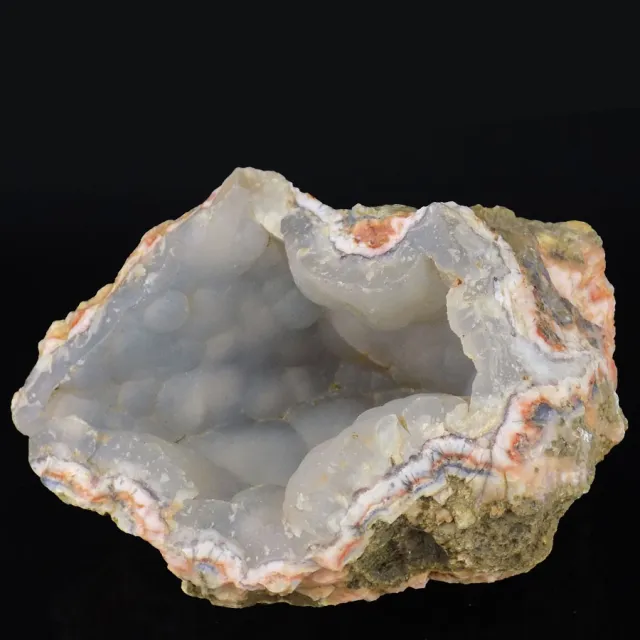
Appearance
The material known as chalcedony is made up of tiny quartz crystals. It is a type of silica that is cryptocrystalline, which means that a microscope is required to observe the tiny crystals. According to the Mohs hardness scale, chalcedony is comparatively hard and durable with a score of 6.5-7. A vast spectrum of hues, including white, gray, blue, pink, yellow, brown, and red, can be found in chalcedony. A single specimen’s color is frequently uniform, but it can also be striped or banded. Chalcedony usually ranges in transparency from opaque.
Geographical Distribution
Around the world, chalcedony is a highly common mineral. It is present in many different geological settings, such as mineral veins and geodes, as well as sedimentary, igneous, and metamorphic rocks. The United States, Madagascar, Brazil, and Mexico are a few prominent chalcedony sources.
History
Chalcedony was first employed in toolmaking as early as 32,000 BP in Central Australia, when flakes of stone from quarries kilometers distant were found during archaeological excavations at sites in the Cleland Hills. Ceremonial stone knives were among the pre-contact usage documented in the 20th century.
Chalcedony was used in the Mediterranean during the Bronze Age; for instance, seals made of chalcedony that date to approximately 1800 BC have been found at the Palace of Knossos in Minoan Crete. People who lived along the Central Asian trade routes carved intaglios, ring bezels (the faceted part of the stone that protrudes from the ring setting), and beads with a strong Greco-Roman influence using chalcedony, especially carnelian.
Idar-Oberstein, Germany, developed into the biggest chalcedony processing hub in the world in the 19th century, mostly handling agates. The majority of these agates originated in Brazil and other parts of Latin America. The local deposits that were mined in the fifteenth century were the first driving force behind the agate carving business in the region of Oberstein and Idar.
Metaphysical Properties
The ability of the stone to absorb and dissipate bad energy so that it does not spread to other people is one of the many reasons why so many people believe in its healing and purifying abilities. Chalcedony is also believed to align the body, mind, and soul, which is probably the reason.

Chemical Composition
A kind of quartz with the chemical formula SiO2 is called chalcedony. This indicates that silicon and oxygen make up the majority of chalcedony’s composition, with trace amounts of other elements and minerals.
Chalcedony’s unique colors and patterns can be attributed to a wide range of impurities. For instance, chalcedony may seem yellow or brown because of iron oxide impurities, whereas titanium and manganese can provide pink or blue hues, respectively. A few other prevalent contaminants are copper, calcium, and aluminum.
Types
The three most popular varieties of chalcedony are onyx, jasper, and agate. Chrysoprase, bloodstone, and carnelian are some other varieties.
Uses
Chalcedony is used extensively in many different fields, such as:
- Jewelry-making: Chalcedony is a well-liked gemstone because of its eye-catching hues, affordability, and resilience in jewelry-making. It is frequently used in bracelets, earrings, and pendants because it can be polished and cut into a wide variety of forms and sizes.
- Industrial applications: A wide range of industrial goods, such as polishing agents, abrasive materials, and ceramics, are made using chalcedony. Moreover, it is employed in the production of ultrasonic transducers, which are employed in industrial and medical imaging.
- Geology: Because it is frequently found in sedimentary rocks and can shed light on the Earth’s creation history, chalcedony is a valuable mineral in geology.
Table





